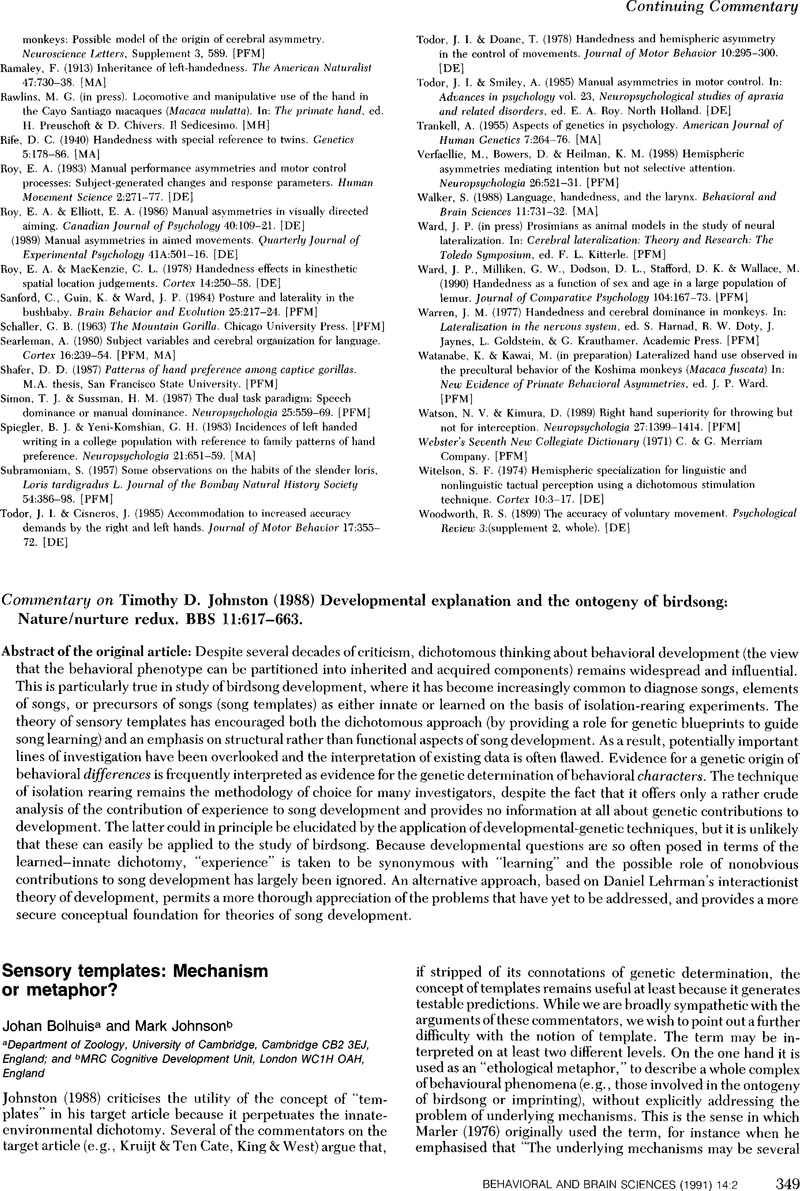Crossref Citations
This article has been cited by the following publications. This list is generated based on data provided by Crossref.
BOLHUIS, JOHAN J.
1991.
MECHANISMS OF AVIAN IMPRINTING: A REVIEW.
Biological Reviews,
Vol. 66,
Issue. 4,
p.
303.
Johnson, Mark H.
Bolhuis, Johan J.
and
Horn, Gabriel
1992.
Predispositions and learning: behavioural dissociations in the chick.
Animal Behaviour,
Vol. 44,
Issue. 5,
p.
943.
Johnson, Mark H.
and
Gilmore, Rick O.
1996.
Perceptual and Cognitive Development.
p.
333.



